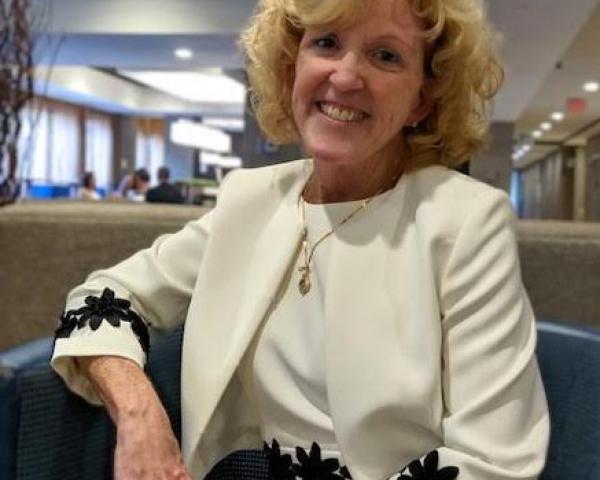If you’re anything like the average person, you probably receive several calls every day from unknown callers or vague 1-800 numbers. And if you’re like most, you probably block those calls or send them straight to voicemail. Americans received close to 46 billion unwanted robocall last year, so this distrustful reaction to incoming calls is forgivable – but the erosion of trust in the phone experience is hampering insurance providers' ability to reach customers. This has hurt bottom lines – increasing operational costs as companies spend more time on customer outreach, while hampering revenue-producing opportunities – all of which is making it harder for agents to generate sales.
To better understand the impact on insurers, our company partnered with research firm Omdia to survey decision makers in the insurance industry. We used the survey to gauge how these negative call experiences are affecting sales, as well as to ascertain what strategies insurers are adopting to restore trust in the phone experience. What we found is an industry in flux, eager to adopt new digital channels while still reliant on traditional ones like the phone to connect and engage their customers.
A Perfect Storm of Distrust
While insurance providers have embraced the spectrum of digital communications channels such as email and texting to communicate with their customers, studies have shown that consumers prefer the phone channel for sensitive or urgent communications. This is especially true for healthcare insurers, which often are under time pressure to enroll members into tailored care management programs following the identification of a high-risk health issue.
Unfortunately for consumers, few industries have been targeted as heavily by scammers as the insurance industry. Because so much misinformation and confusion exists around insurance, scammers have found great success impersonating representatives from the government-run health insurance marketplace, threatening consumers with fines or imprisonment unless they hand over personal information or pay bogus fees.
Naturally, the uncertainty triggered by the COVID-19 pandemic has only accelerated these schemes. More than half (54%) of respondents in our survey said that, while outbound call volume increased significantly over the past six months, answer rates have remained largely stagnant, requiring insurance providers to spend even more cycles trying to connect with their customers.
Because of the high prevalence of fraud in the insurance industry, it’s little wonder that the respondents in our survey said that the phone has been relegated to the third most important communications channel (45%), trailing mobile apps (55%) and email (73%). Despite this, insurers recognize that the phone is an essential channel for certain types of critical communications, with 82% of respondents saying that the phone was their primary vehicle for delivering payment reminders, while almost two-thirds (64%) rely on the phone to notify customers about potential fraudulent activity and cancellation alerts.
Further compounding these challenges is that, because of the confusion around complying with new regulations, an alarming percentage of outbound calls are simply not getting through: More than a third of respondents (36%) reported that over 30% of their calls were being erroneously blocked, with over half (54%) of respondents estimating that they’ve lost 10% of revenue due to call blocking and mislabeling.
See also: Why Open Insurance Is the Future
Five Strategies to Rebuild Trust
Phone calls still play a vital role in the customer journey and offer valuable opportunities to connect with customers. Forward-thinking insurers are using a host of strategies to make outbound voice calls more effective. Here are five of the best practices that we have identified that insurers can leverage to rebuild trust in voice communications:
#1: Call customers when they are most likely to answer.
A surprising number of enterprises don’t take basic consumer behavioral intelligence into account when structuring their outbound campaigns. Modern consumer data insight solutions integrate strategies such as a "contactability score" for each contact and apply phone behavioral intelligence to determine key preferences such as the best time of the day, best day of the week and the best phone number to use when reaching out to each individual in your database.
#2: Apply caller name optimization to boost customer pick-up rates.
Even legitimate calls can be mistakenly blocked by new rules designed to protect consumers. Insurers should invest in solutions such as caller name optimization, which allows them to display accurate and consistent caller ID on their outbound calls. This provides a secondary level of assurance that calls are not inadvertently blocked or marked as spam by network carriers or third-party providers of call screening software. Enterprises can also manage their caller ID through a centralized online portal, protecting verified phone numbers from attempts at ID spoofing
#3: Ensure calls aren’t mistakenly blocked by carriers.
According to our survey, over 90% of respondents said they were familiar with the mandate for Communications Service Providers to implement STIR/SHAKEN call authentication. As more service providers deploy STIR/SHAKEN to protect enterprises and consumers from call spoofing and scams, legitimate calls may be blocked or marked as spam. It’s up to enterprises to authenticate the caller identity for outbound calls and digitally sign calls by integrating STIR/SHAKEN protocols in their calling networks. This provides a way to influence the level of trust calls are given by voice service providers.
#4: Adopt branded call displays to establish trust for outbound calls.
The first step to improving trust in voice channels is to assure customers that the call they are receiving is legitimate. A simple way to achieve this is by implementing branded calling solutions that enable insurers to display their company name, their logo, reason for the call and a verification of the caller identity. When we asked respondents if they thought they would find this solution valuable, 82% of respondents said they would. Branded calling not only makes claims resolution more efficient but can materially reduce inbound calls, which is one of the highest costs to a claims division.
See also: 7 ‘Laws of Zero’ Will Shape Future
#5: Prioritize a layered omnichannel approach.
In today’s multi-channel reality, the most trusted brands are the ones that can deliver a consistent and seamless experience to their customers across channels. A robust omnichannel strategy doesn’t just mean offering consumers a variety of ways to interact with a business – it means that each one should be intelligently weighted to fully realize its respective advantages. For instance, our research has found that consumers are much more likely to answer a call if they receive an email-to-text notification in advance of the call.
The insurance industry as a whole is predicated on the ability of adjusters to quantify and predict risk. And insurance professionals are better than most at making accurate predictions. While not everything is foreseeable, this much is: The ability of insurers to survive and thrive in the uncertain future will require the ability to adapt and to optimize their voice channel practices.






